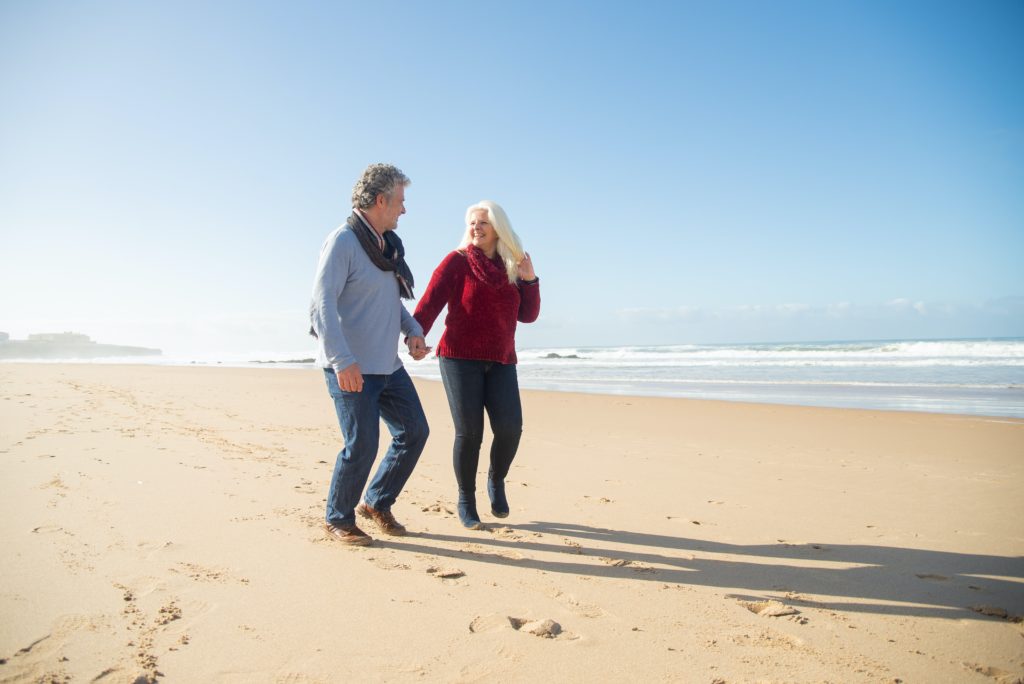How you communicate with your spouse makes a difference in all areas of your life. Here are the 3 things you need for open communication:
1. A Foundation of Safety
When you build a large building, you set the foundation first. And you can tell, just from a foundation, how large a building is going to be: the deeper the foundation, the bigger the building.
It’s the same in a relationship; the deeper you build your foundation, the better your relationship can grow. And the foundation of all communication is safety.
When you’re talking with your spouse—or anyone, even—and they begin to defend themself or feel like they have to explain themself, if you find yourself interrupted, you can know right then that they are not feeling safe! They’re feeling judged and not understood. That feeling creates a defensiveness, and that’s often the beginning of many fights. It just goes south from there.
That’s a good time to back up and ask yourself and your spouse: How can we make this conversation safe?
2. A Purpose: Why
The first thing that builds safety is being on the same goal—or, you could say, having the same purpose. Why are you talking in the first place? Now, we often assume that this is understood. But often, it isn’t as obvious as we think. So it helps to verbalize, out loud, why you’re talking.
3. A Process: How

Once you’ve established that, then the next step to focus on is the process. That’s the how. The process is comprised of two aspects: the physical structure and the emotional structure. The physical structure always affects the emotional structure.
The physical structure is the environment and the positions you are in; they have a bigger effect than you’d think! If you’re sitting in the kitchen and talking face-to-face, that’s a lot different than talking while on a walk, hand-in-hand. Just the physical structure can create a lot of safety or a lot of intensity. If you find yourself having difficulty feeling safe, try changing the setting.
The concept is to switch up your normal patterns and to be more aware of your words and actions!
Ideas for Different Settings

- Go someplace! I know many people who, when they first meet someone, prefer to meet at a restaurant. Because there’s a crowd around, it feels safe—there’s protection in numbers. That’s a smart idea. As you begin to know and trust someone more, then it’s easier to go to more intimate and private settings.
- Have a Third Party. Many couples feel safety in my office because they feel I can be a type of referee. It’s very easy to get back into the old patterns of arguing, so having someone there to intervene and interrupt the normal pattern can be a great help.
- Sit on the Ground. It may sound weird, but I tell men to do this a lot, because oftentimes they are larger, so there’s a subconscious feeling of physical threat. Sitting on the floor also breaks the conversation pattern, making the spouse question, “What are you doing?” The unique position further serves to remind the sitter to be aware of their language, tone, and energy. When the heart rate goes over 100 beats a minute, the cognitive brain begins to shut down, and we’re not able to think or talk as logically as we normally do. We need to be calm, whether that’s just through thinking and making sure our heart rate is slower or sitting down and creating that physical structure.
- Try a talking stick. Dr. Stephen Covey also describes a fun way that he learned to create effective turn-taking in communication: a “talking stick.” Just grab a marker or a pen, and say, “This is the microphone.” Before you begin the conversation, it’s important to set the rules and say something like, “When you have the stick, you’re the only one who can talk. Once you’ve said all you want to, you pass it.”
How I Do It
The setting structure can and should be adjusted to your relationship. My wife is a multitasker; she likes to be actively doing and achieving things. Because I’m a counselor, I’m used to really getting deep into feelings, discussing things without distractions. So, what my wife and I have found works best for us is to go on a long drive! She does the driving, and that keeps her busy at one level and thus more able to hear my words. Normally, outside of driving, I feel that I don’t have the words to express what I want to as quickly as she would like me to. But because she’s busy driving, she’s able to be more patient with me, and that allows me to be more open and communicate more.
Not every method works the same for everyone. But you choose what makes you and your partner feel safe!
Why, How, and What
Once that foundational safety is in place and you establish together what the purpose is (the why) and agree on what talking process works best (the how)—at that point, the content (the what) is easy! You can tackle any topic when those other aspects are in place!
Troubleshooting
If you begin to argue, disagree, or interrupt each other, then you need to stop! It’s not working. Go back and review your why, how, and what, and do what you need to do to keep it safe. Safety is the most important thing!
Meet Rod

Rodney Limb has always enjoyed listening to people and helping them work out problems and struggles. As a Licensed Clinical Professional Counselor (LCPC), Licensed Marriage and Family Therapist, and a Nationally Licensed Hypnotherapist for over 20 years, he has helped hundreds of couples create a happy and thriving marriage out of disaster. He also provides counseling for anxiety, depression, stress, PTSD, and overcoming various behavioral addictions.
A Deeper Look into Spiritual Truths
“We must be careful not only what we communicate, but also how we do so. Souls can be strengthened or shattered by the message and the manner in which we communicate.” — L. Lionel Kendrick

